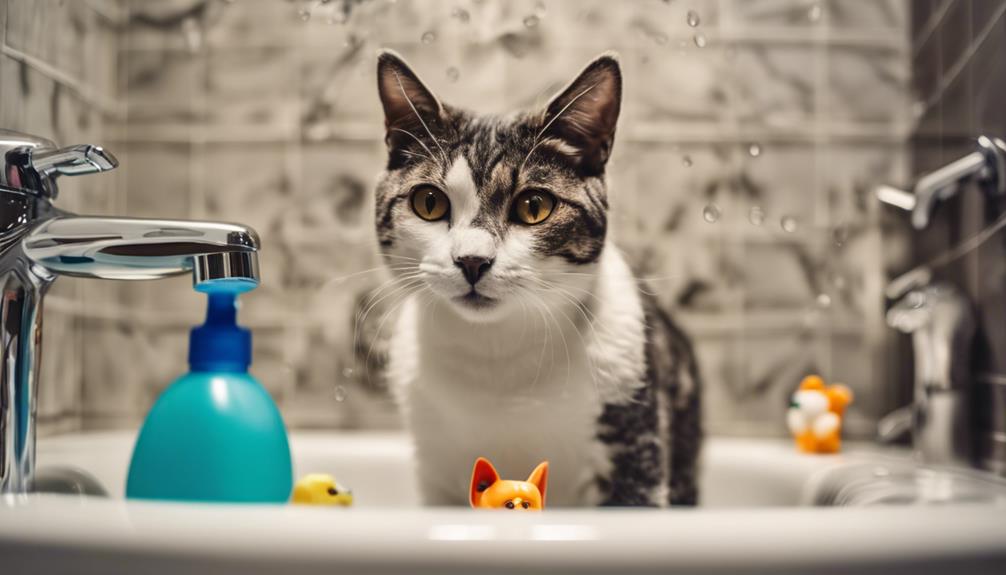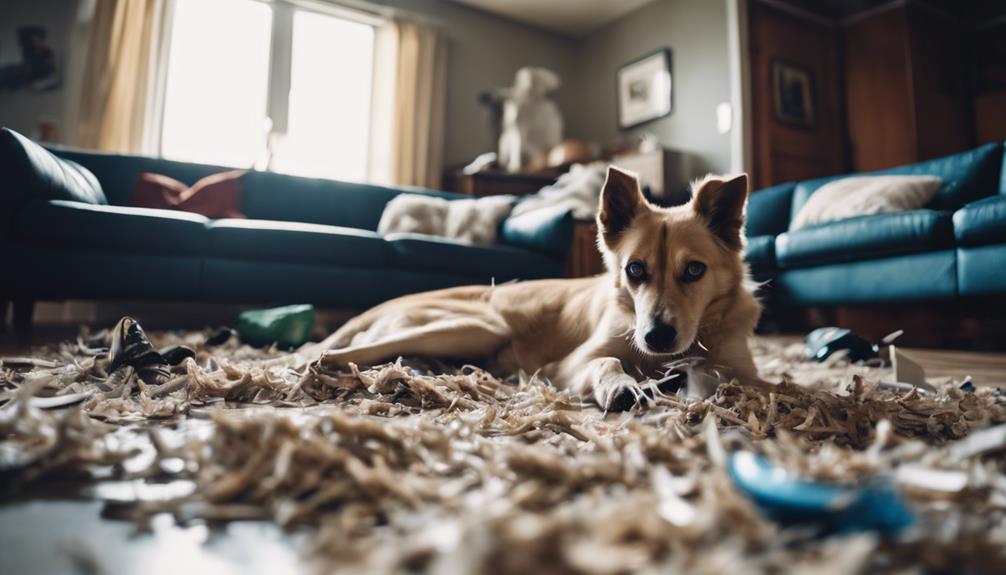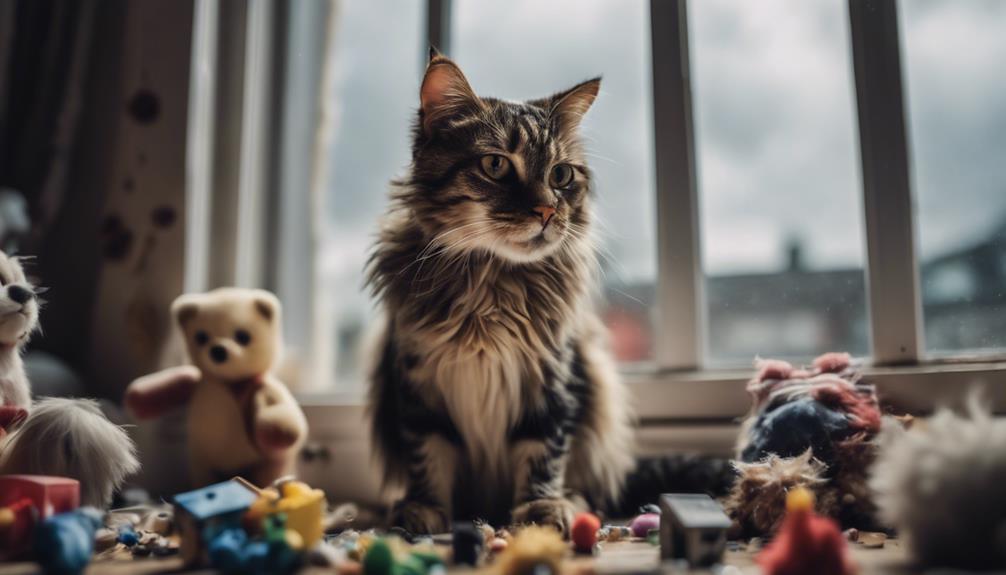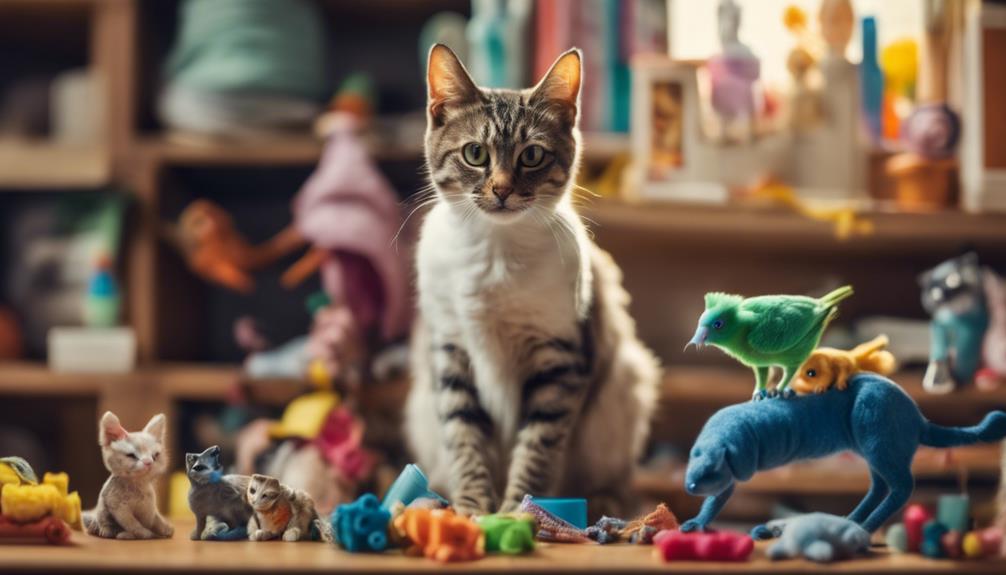Understanding your pet’s strange behaviors at home is crucial for meeting their needs. If your cat is urinating outside the litter box, it could be due to stress or marking territory. Dogs may have accidents indoors because of anxiety or confusion, particularly after a relocation. Chewing on furniture is often a result of boredom or anxiety, so providing stimulating toys can help. Hiding could indicate stress as well. Always be on the lookout for any environmental changes that could be causing distress. By observing these behaviors and establishing a consistent routine, you can help your pet feel more secure and at ease. There is still more to learn about their unique quirks.
Another behavior to watch for is excessive barking or whining, which might signal loneliness or separation anxiety. Giving your pet a comfortable and safe space, like a crate or designated area, can alleviate these feelings. It may also be helpful to follow some home staging tips, such as keeping your pet’s belongings in familiar places and maintaining a consistent environment, to reduce stress and confusion during any household changes. Taking the time to comprehend and address your pet’s behaviors can result in a happier and healthier living situation for both you and your furry companion.
Key Takeaways
- Monitor your pet's bathroom habits; accidents may indicate stress, confusion, or inadequate training.
- Provide enough litterboxes or outdoor access to prevent inappropriate bathroom behaviors.
- Destructive chewing can signal anxiety or boredom; ensure ample physical and mental stimulation.
- Hiding behaviors often reflect stress; create a safe space for your pet to retreat.
Understanding Unusual Bathroom Habits

Understanding your pet's unusual bathroom habits can reveal important insights into their emotional well-being and stress levels.
If your cat's peeing outside the litterbox, it might be marking territory or reacting to stress. Insufficient litterboxes can also lead to accidents in odd places, so make certain you have enough for all your pets.
For dogs, sudden indoor accidents may signal anxiety or confusion, especially after environmental changes like moving. Pay attention to these behaviors, as they often indicate underlying emotional issues.
Addressing Indoor Accidents
When your pet has indoor accidents, it's important to identify the underlying causes to effectively address the issue. Start by observing your pet's behavior and environment.
Here are some common reasons for indoor accidents:
- Stress and Anxiety: Sudden changes can unsettle your pet, causing them to act out.
- Inadequate Potty Training: If your pet hasn't fully grasped where to go, accidents will happen.
- Medical Issues: Health problems can lead to loss of control, so a vet visit might be necessary.
- Insufficient Bathroom Access: Make sure your pet has easy access to their designated bathroom area.
Managing Destructive Chewing

Destructive chewing often stems from anxiety or boredom, so it's crucial to address the underlying causes to protect your belongings.
Start by providing plenty of appropriate chew toys to redirect your pet's chewing habits. Consider engaging them in regular physical activities, like walks or playtime, to release pent-up energy.
Mental stimulation is equally important; puzzle toys can keep their minds busy and distracted from destructive behaviors.
Establish a routine to provide consistency and reduce anxiety. If your pet chews on furniture or shoes, supervise them closely and gently redirect their attention to their toys.
Coping With Hiding Behaviors
Hiding behaviors in pets often signal stress or anxiety, and addressing these feelings is vital for their well-being. When your pet seeks refuge, it's important to provide comfort. Here's how you can help them cope:
- Create a safe space – Designate a quiet area with their favorite blanket and toys where they can retreat.
- Maintain a routine – Consistent feeding and play schedules can help reduce anxiety.
- Engage in gentle play – Spend quality time with them using soft toys to encourage interaction and build trust.
- Monitor changes – Keep an eye on your environment; even small shifts can unsettle your pet.
Your attention and patience can greatly ease their stress and help them feel secure again.
Recognizing Stress-Related Hair Loss

Stress-related hair loss in pets is often a clear sign that something's amiss in their environment or routine. You might notice patchy areas or excessive shedding, which can indicate emotional distress. It's vital to evaluate any recent changes, such as moving, new pets, or changes in your schedule. Regular grooming and a balanced diet can help mitigate hair loss, but addressing the root cause is imperative.
| Signs of Stress | Possible Solutions |
|---|---|
| Excessive shedding | Provide calming environments |
| Patchy hair loss | Establish a consistent routine |
| Change in grooming habits | Regular grooming sessions |
| Increased hiding behavior | Create a secure space |
| Lethargy or apathy | Engage in play and exercise |
Recognizing these signs can help you support your pet's emotional well-being.
Conclusion
In the tapestry of your pet's life, each unusual behavior is a thread, weaving together their emotional landscape.
By understanding these quirks, you're not just addressing symptoms; you're nurturing a deeper bond.
Just as a garden flourishes with care, your pet will thrive in a supportive environment.
Embrace the journey of unraveling their behaviors, and you'll discover that every strange habit is a whisper of their needs, guiding you both toward a happier, healthier companionship.









